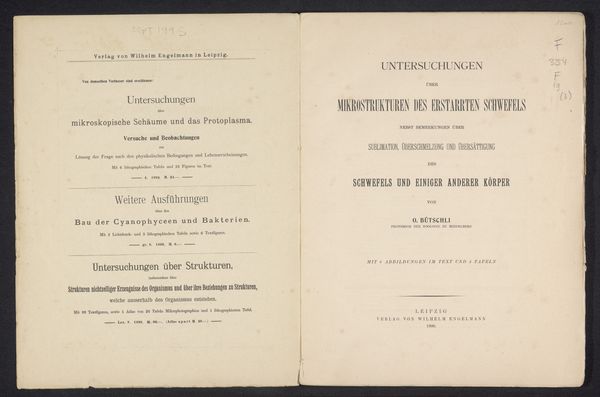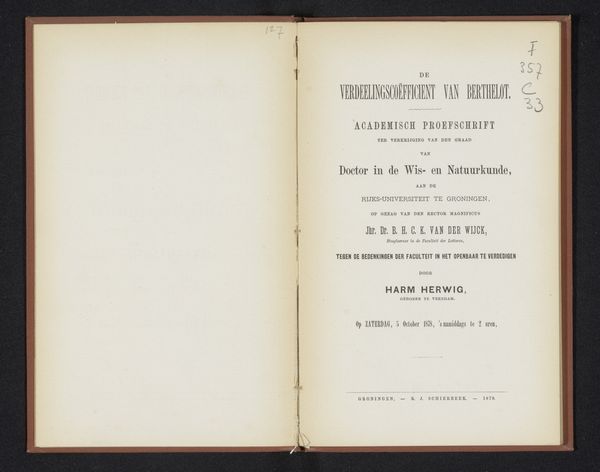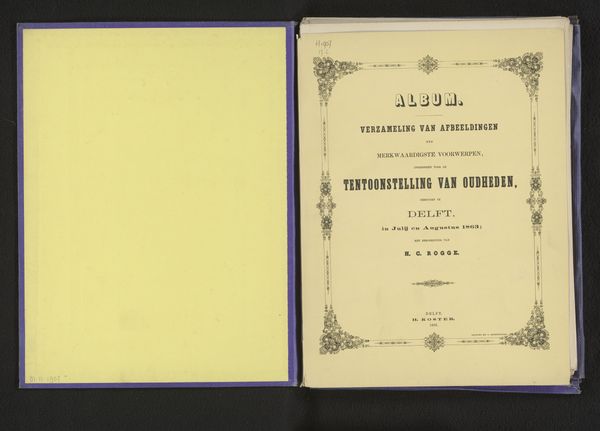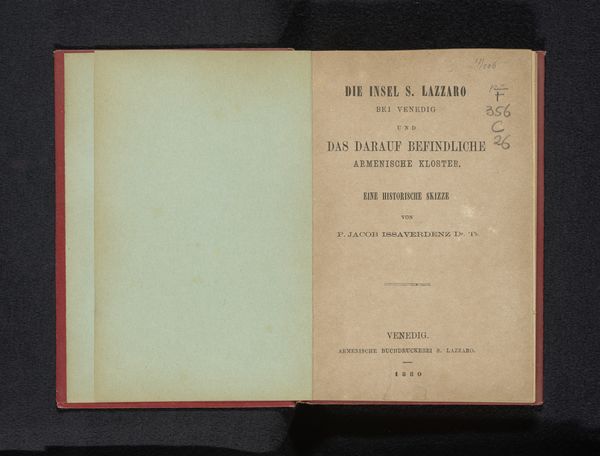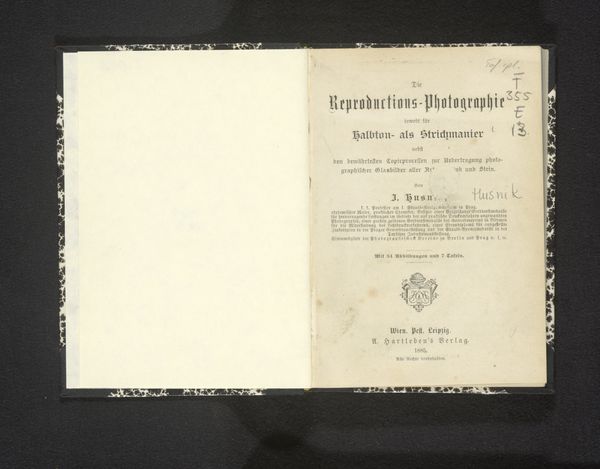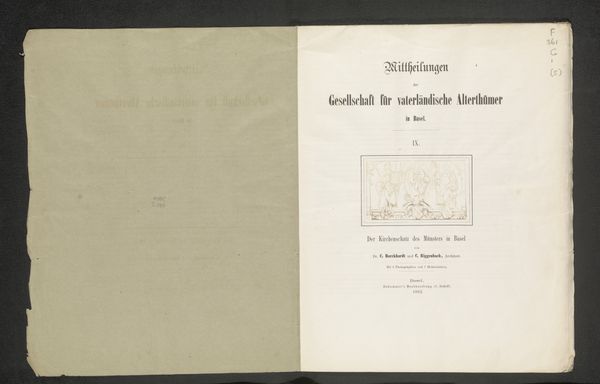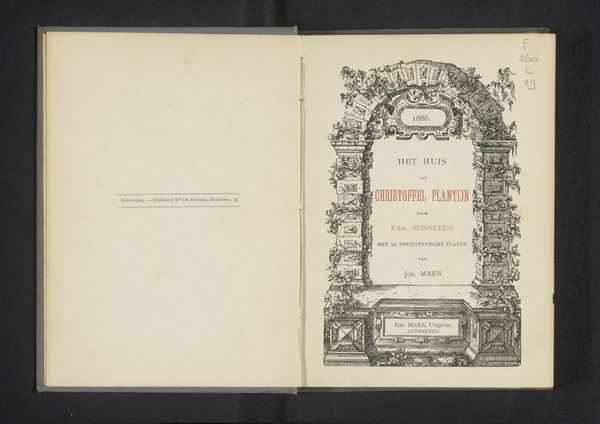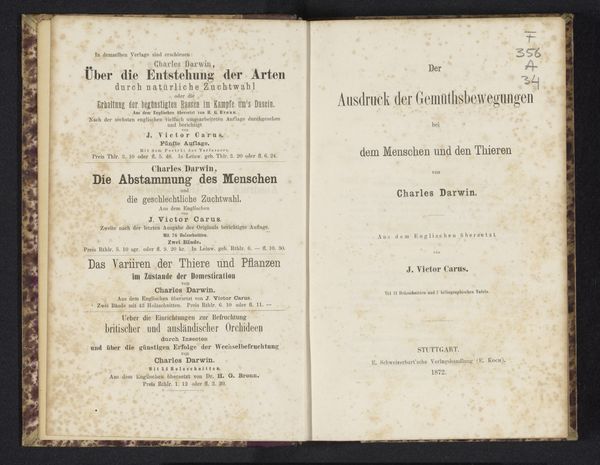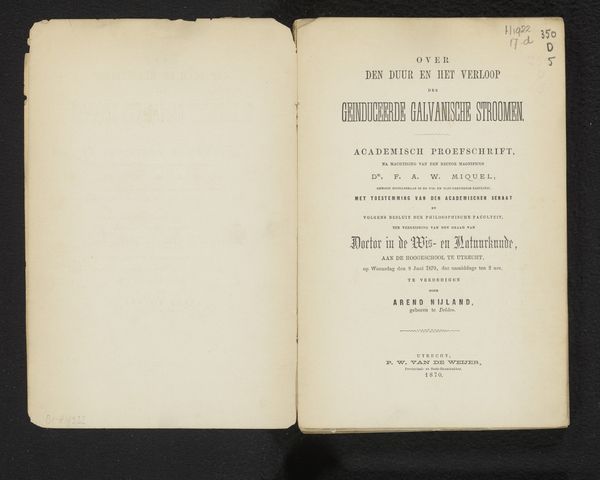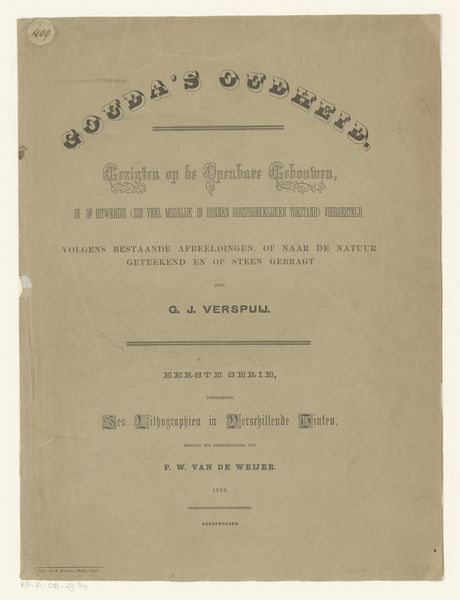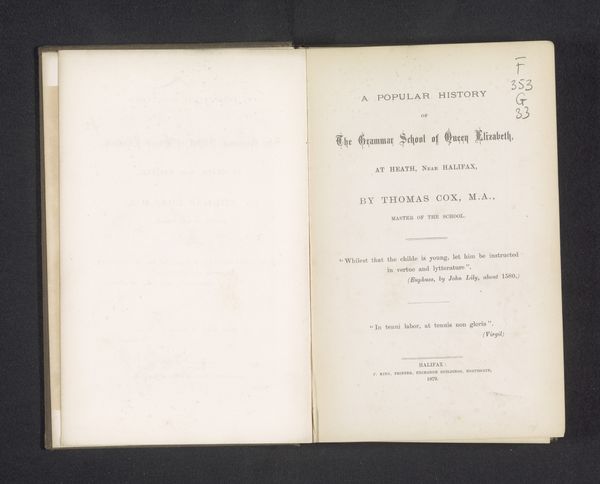
Das Gesammtgebiet des Lichtdrucks, die Emailphotographie und anderweitige Vortschritten zur Umkehrung der nagativen und positiven Glasbilder 1885
0:00
0:00
graphic-art, print, photography, typography
#
graphic-art
# print
#
photography
#
typography
Dimensions: height 181 mm, width 128 mm, thickness 17 mm
Copyright: Rijks Museum: Open Domain
Editor: Here we have "Das Gesammtgebiet des Lichtdrucks, die Emailphotographie und anderweitige Vortschritten zur Umkehrung der nagativen und positiven Glasbilder," from 1885, by Jakub Husnik. It seems to be some kind of photography manual or printed book spread. It looks incredibly dense, full of tightly packed text. What catches your eye when you look at this? Curator: You know, it’s funny, but I'm transported back to libraries of old, smelling of aging paper. It is also striking that even this early, people felt the need to catalogue and share knowledge about photography so avidly. The obsessive impulse to categorize is as old as time. Does this image invite you into that earlier period of burgeoning science and aesthetics, where everything felt fresh with discovery? Or, maybe I'm romanticizing the pre-digital era… Editor: No, I think you’re right. There’s definitely a sense of discovery here. Like this book is meant to unlock some kind of… well, photographic secret. I find the mix of text and what appears to be a publishing company logo charming, and maybe even… reassuring. Does it speak to a wider trend in visual culture? Curator: Absolutely. It’s a record of how images were not just *made* but *shared*, debated, disseminated, consumed. That imprint shows where it's coming from. How something seemingly intangible (an image, light) can be printed and bound; the relationship between art, science and industrial manufacture all colliding together into book form. That collision still resonates profoundly today, don’t you think? Editor: It definitely does. I never thought about a book as a container for ideas being so explicitly linked to this collision of seemingly disparate elements. I see so much more now!
Comments
No comments
Be the first to comment and join the conversation on the ultimate creative platform.
